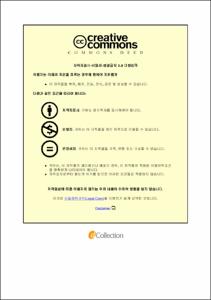학령기 아동의 놀이성과 우울 및 불안의 관계
- Abstract
- The purpose of this study is to explore role of playfulness by examining relationship between playfulness and depression and anxiety for children in childhood. To meet the purpose, research questions are
1. Are there differences in playfulness, depression, and anxiety according to
children’s gender?
2. How is the effect of children’s playfulness on depression?
3. How is the effect of children’s playfulness on anxiety?
Participants of this study are 4th, 5th, 6th grades’ children in two elementary schools located in Changwon city. A total of 981 questionnaires were used for the data analysis and three research tools were used to measure children’s playfulness, depression, and anxiety. Data were analyzed by conducting T-test and multiple regression analysis using SPSS 18.0 program.
Results of this study are as follows.
First, according to gender difference, boys showed better performance than girls in humor and novelty among playfulness’ sub-factors. Girls showed better scores than boys in independent playfulness. However, no meaningful differences were found according to children’s gender.
Second, in relations between playfulness and depression, five sub-factors except fun-indulgence in playfulness showed influences in depression. Results indicated that children who had high performance in humor-sense, independent playfulness, and novelty showed higher performance in depression. On the other hand, children who had high performance in social and emotional playfulness tended to show less depression.
Third, in relations between playfulness and anxiety, four sub-factors showed influences in anxiety. Results indicated that children who had high performance in social and emotional playfulness showed higher performance in anxiety. On the other hand, children who had high performance in independent playfulness and novelty tended to show less anxiety.
Based on the results, discussion and implication were suggested in terms of providing valuable information about playfulness’ roles as internal characteristics which influence on depression and anxiety of school-aged children.
- Issued Date
- 2017
- Awarded Date
- 2017. 8
- Type
- Dissertation
- Publisher
- 부경대학교
- Affiliation
- 부경대학교 교육대학원
- Department
- 교육대학원 아동심리및상담전공
- Advisor
- 이연우
- Table Of Contents
- Ⅰ. 서론 1
1. 연구의 필요성 및 목적 1
2. 연구문제 5
3. 용어의 정의 6
Ⅱ. 이론적 배경
1. 놀이성 7
1) 놀이성의 개념 7
2) 놀이성의 하위요인 9
3) 학령기 아동의 놀이성 관련 선행연구 11
2. 우울 13
1) 우울의 개념 13
2) 우울의 특징 15
3) 학령기 아동의 우울 관련 선행연구 18
3. 불안 21
1) 불안의 개념 21
2) 불안의 특징 23
3) 학령기 아동의 불안 관련 선행연구 25
Ⅲ. 연구 방법 29
1. 연구대상 29
2. 연구도구 30
3. 연구절차 35
4. 자료분석 35
Ⅳ. 연구 결과 36
1. 학령기 아동의 성별 특성에 따른 놀이성, 우울, 불안 차이검증 36
2. 학령기 아동의 놀이성이 우울에 미치는 영향 37
3. 학령기 아동의 놀이성이 불안에 미치는 영향 38
Ⅴ. 논의 40
1. 논의 및 결론 40
2. 제언 44
46
55
- Degree
- Master
- Files in This Item:
-
-
Download
 학령기 아동의 놀이성과 우울 및 불안의 관계.pdf
기타 데이터 / 854.18 kB / Adobe PDF
학령기 아동의 놀이성과 우울 및 불안의 관계.pdf
기타 데이터 / 854.18 kB / Adobe PDF
-
Items in Repository are protected by copyright, with all rights reserved, unless otherwise indicated.